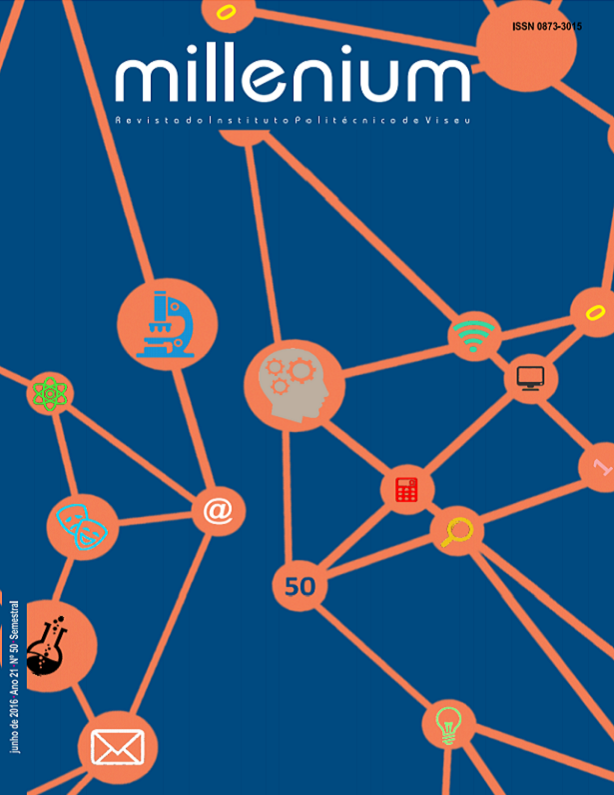Pain in children submitted to peripheral venipuncture. Prevention with eutectic mixture of local anesthetics
Keywords:
pain, child, painful procedures, peripheral venous puncture, topical anestheticsAbstract
In daily practice we are faced often with pain and suffering of children submitted to venipuncture whose minimization remains a real challenge and an urgent need for uniformity in the conduct of nurses towards this problematic. Currently, the use of local topical anesthetic to prevent pain in pediatric practice, especially in performing painful procedures should be recommended as essential in the integral assistance to children, ensuring a significant improvement of care. Objectives: To study the efficacy of EMLA ® occlusive patch in the prevention of pain in children submitted to venipuncture, as well as some factors that we consider in some way, contribute to a better understanding of pain in children subjected to painful procedures. Methods: Quasi-experimental study with a quantitative approach. The sample included 78 children aged 6 to 17 years, divided into two groups: GE, consisting of 47 children submitted to venipuncture with prior application of EMLA® , GC, consisting of 31 children submitted to venipuncture without application of topical anesthetics. Data were collected through a questionnaire which contained scales for pain assessment. Results: In total 24.4% of children assessed pain at index 0 (no pain), of which 23.1% was used topical anesthetic. In the GC observed average pain scores (4.81) significantly higher than in GE (1.96). Conclusion: The results indicate the effectiveness of topical anesthetic EMLA® in the prevention and reduction of pain in the child submitted to venipuncture and also allowed to verify the relationship of some variables with pain in the child submitted to this procedure.Downloads
References
• Batalha, Luís (2005). As dificuldades na quantificação exacta da dor. Servir, 53(4): 166-174.
• Batalha, Luís (2010). Intervenções não farmacológicas no controlo da dor em cuidados intensivos neonatais. Referência, 2: 73-80.
Disponível em: .
• Barros, L. (2003). Psicologia Pediátrica: Perspectiva Desenvolvimentista. 2ª ed. Lisboa: Climepsi.
• Barros, Luísa (2010). A dor pediátrica associada a procedimentos médicos: contributos da psicologia pediátrica. [Versão eletrónica] Temas em Psicologia. 18(2): 295-306. Disponível em: <http://www.sbponline.org.br/revista2/vol18n2/PDF/v18n2a04.pdf>.
• Carvalho, Maria Margarida M. J. (1999). Dor: um estudo multidisciplinar. 2ª ed. São Paulo: Summus Editorial.
• Eichenfield, M. D. Lawrence F. et al. (2002). A Clinical study to evaluate the efficacy of ELA-Max (4% Liposomal Lidocaine) as compared with Eutectic Mixture of Local Anesthetics Cream for pain reduction of venipuncture in children. [Versão eletrónica] Pediatrics. 109(6): 1093-1099. Disponível em: <http://pediatrics.aappublications.org/content/109/6/1093.full.pdf+html>.
• Fragata, Célia. (2010). Avaliação Pediátrica da Ansiedade face à Dor na Punção Venosa em Crianças com e sem Problemas do Desenvolvimento. Dissertação de Mestrado. Universidade de Coimbra, Portugal.
• Kleiber, R.N. Charmaine et al. (2002). Topical anesthetics for intravenous insertion in children: a randomized equivalency study. [Versão eletrónica] Pediatrics, 110(4): 758-761. Disponível em: <http://pediatrics.aappublications.org/content/110/4/758.abstract>.
• Macedo, E. C. et al. (2006). Reacciones de niños y adolescentes sometidos a analgesia tópica local en la punción venosa periférica. [Versão eletrónica] Enfermería Global, 9: 1-8. Murcia. Disponível em: <http://revistas.um.es/eglobal/article/view/308>.
• Okada, M. et al. (2001). Dor em Pediatria. [Versão eletrónica] Revista Médica. 80: 135-156.
• Queiroz, Fernanda Cristina et al. (2007). Manejo da dor pós-operatória na Enfermagem Pediátrica: busca de subsídios para aprimorar o cuidado. [Versão eletrónica]. Revista Brasileira de Enfermagem, 60(1): 87-91.
Disponível em: <http://www.scielo.br/scielo.php?pid=S0034-71672007000100016&script=sci_arttext>.
• Silva, Esther Almeida et al. (2007). Práticas e condutas que aliviam a dor e o sofrimento em crianças hospitalizadas. Comunicação Ciência Saúde. 18(2): 157-166.
• Vázquez, A. S. Fernández et al. (1999). Ensaio do creme EMLA para venopunção em crianças [Consultado em 16 Set. 2011]. Disponível em: <http://www.clasa-anestesia.org/revistas/portugal/HTML/PortugalEnsaio_Do_Creme_Emia_Para_Venopu.htm>.
• Udelsmann, A. B. et al. (1997). Estudo comparativo entre a inalação de óxido nitroso e a aplicação da mistura eutética de anestésicos locais na prevenção da dor da punção venosa em anestesia pediátrica. [Versão eletrónica]. Revista Brasileira de Anestesiologia. 47(6): 497-501. Disponível em: <http://bases.bireme.br/cgibin/wxislind.exe/iah/online/?IsisScript=iah/iah.xis&src=google&base=ADOLEC&lang=p&nextAction=lnk&exprSearch=277377&indexSearch=ID>
Downloads
Published
How to Cite
Issue
Section
License
Authors who submit proposals for this journal agree to the following terms:
a) Articles are published under the Licença Creative Commons (CC BY 4.0), in full open-access, without any cost or fees of any kind to the author or the reader;
b) The authors retain copyright and grant the journal right of first publication, allowing the free sharing of work, provided it is correctly attributed the authorship and initial publication in this journal;
c) The authors are permitted to take on additional contracts separately for non-exclusive distribution of the version of the work published in this journal (eg, post it to an institutional repository or as a book), with an acknowledgment of its initial publication in this journal;
d) Authors are permitted and encouraged to publish and distribute their work online (eg, in institutional repositories or on their website) as it can lead to productive exchanges, as well as increase the impact and citation of published work
Documents required for submission
Article template (Editable format)





